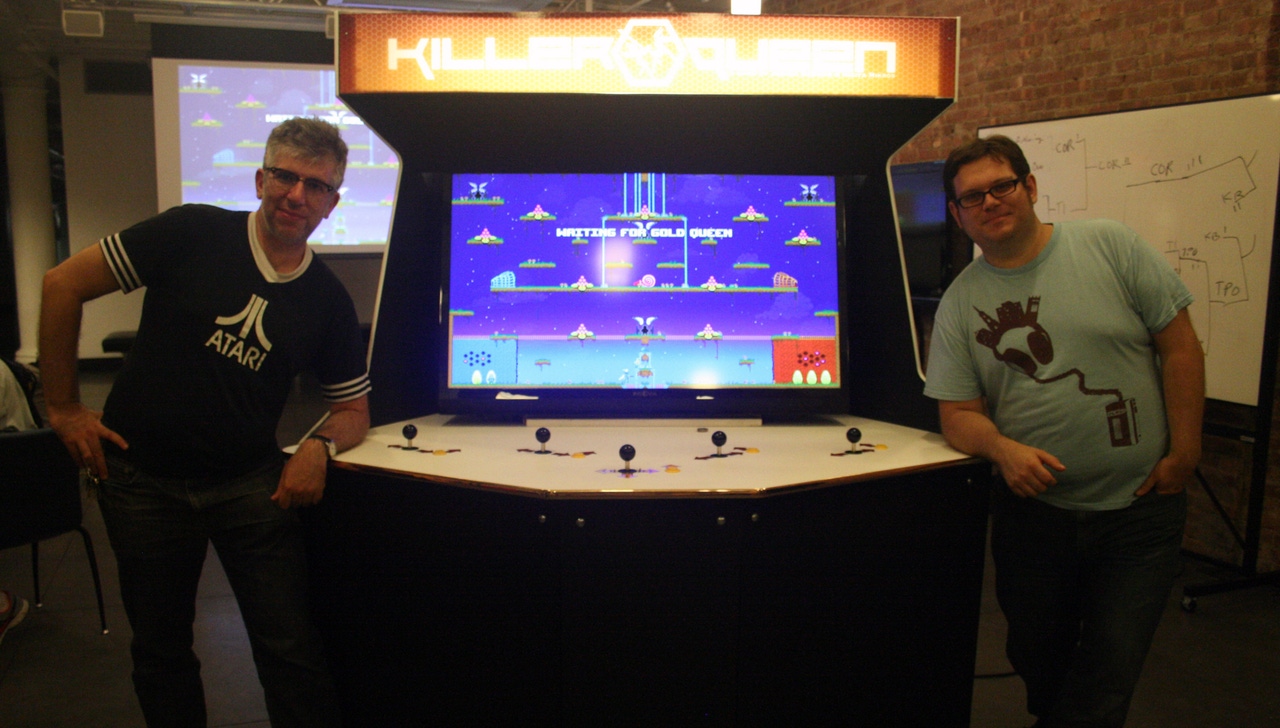Trending
Opinion: How will Project 2025 impact game developers?
The Heritage Foundation's manifesto for the possible next administration could do great harm to many, including large portions of the game development community.
On episode 36 of the Game Developer podcast, we interviewed Nik Mikros and Josh Debonis of Killer Queen developer BumbleBear games, diving into the game's almost decade-long evolution.
October 18, 2023

Killer Queen is a popular five vs five arcade game (and successful esport) that came out of the wildly creative world of in-person field games. Interviewing Nik Mikros and Johs DeBonis of BumbleBear Games, we dived (not unlike a killer queen bee with a deadly sword) right into the challenges and intricacies of designing a game for chaotic live play.
Music by Mike Meehan. Produced by Jordan Mallory.
Listen now on Apple Podcasts, Google Podcasts, and Spotify.
Killer Queen started out as a live field game, where teams physically ran around on a playground or other physical space. Eventually, after showcasing the game around the world, the team, tired of hauling equipment all around and, on the advice of a colleague, decided to make it into an arcade game.
"Instead of a computer, you're running around with foam swords—it feels like a playground game like Capture the Flag, but maybe a little nerdier. It has a lot of spectacle of our earlier games," said DeBonis, referring to his and Mikros' early work, all embodying a kind of playful chaos.
"But had a lot of depth and strategy. I think that's where Killer Queen came out of," he said.
Mikros mentioned an earlier experiment with "live-action" Pitfall and some supposed, alleged permits to conduct games in parks that may or may not have been fully legit.

In early video prototypes, the game was whittled from 16 to 12 down to the current ten, in the five vs five game you can enjoy in an arcade today. Part of that was just because the cabinet was already huge, and part was finding a sweet spot of balance. It also makes the game easier to fill out to two full teams in an arcade environment.
Debonis notes that the attract screen of the game is very deliberately oriented towards performance and the physical experience of playing the game in a real-life environment. Instead of showing too many elements of the on-screen game, attract mode shows real-life players laughing and screaming and getting very into competitive matches: "What we show is people playing," said Debonis. "That's the experience, you standing shoulder to shoulder with your friends."
Listen to the episode for our full discussion and design deep dive.
Read more about:
Game Developer PodcastYou May Also Like